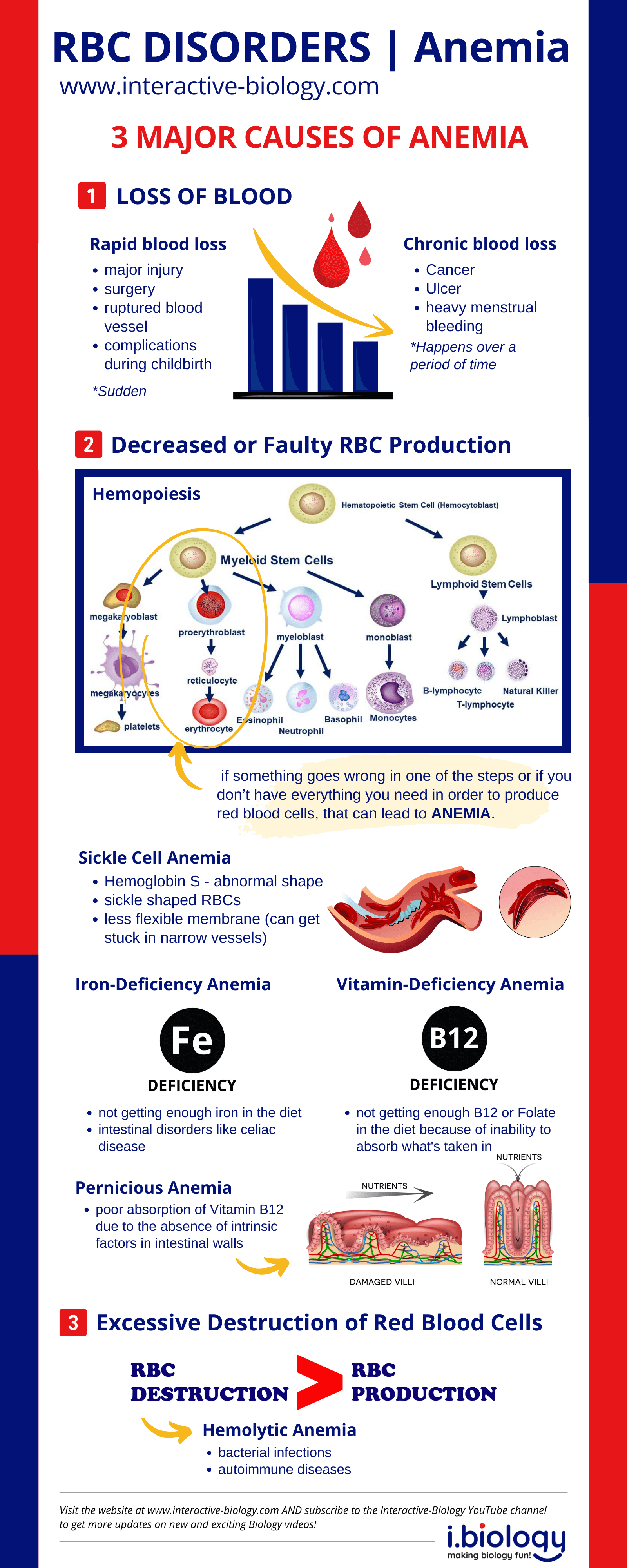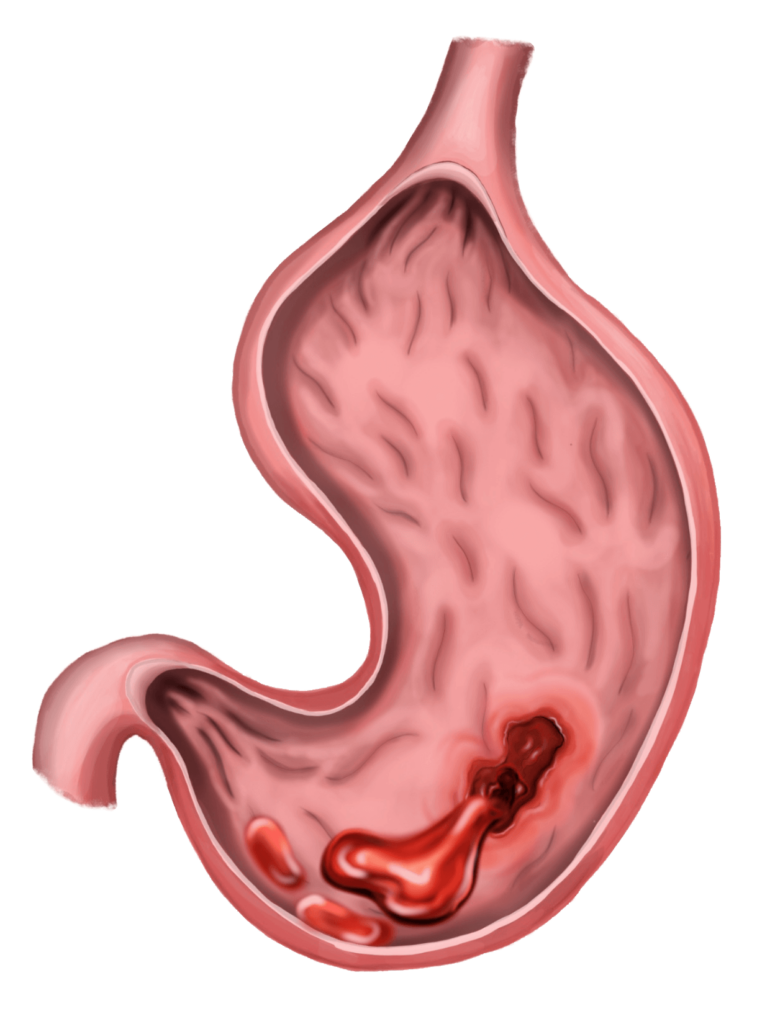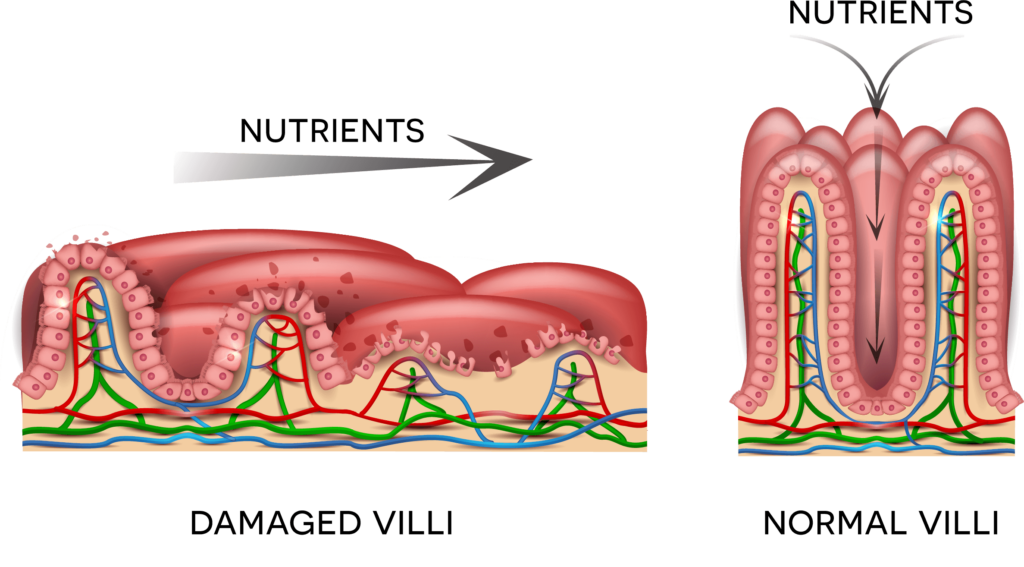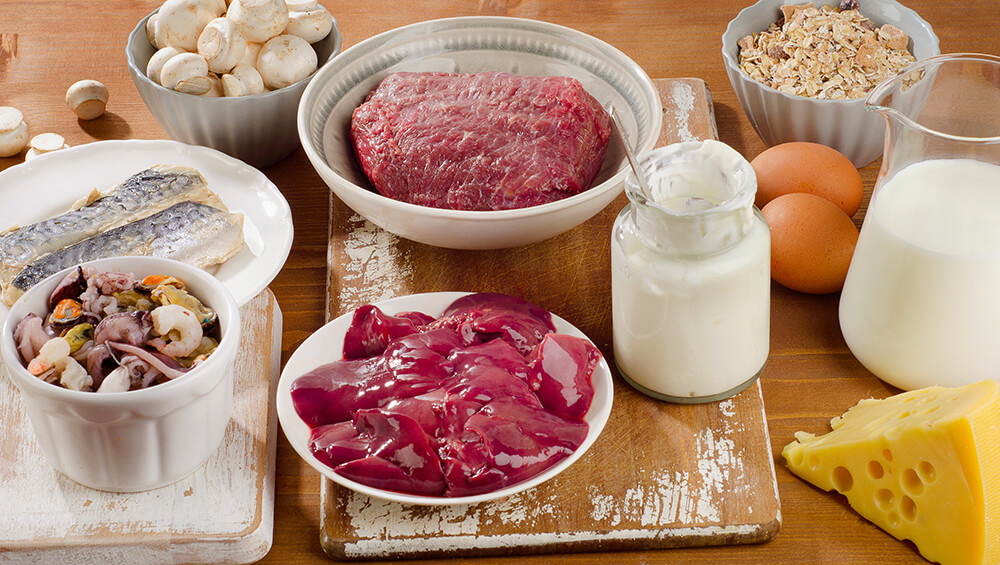Erythrocytes a.k.a. Red Blood Cells help us transport oxygen throughout the body. But what happens when they don’t work the way they should? Let’s find out.
Topic Outline:
Because of the important role that red blood cells have especially when it comes to supplying the structures inside our bodies with much-needed oxygen, when there’s something wrong with our red blood cells, that can have a significant impact on our health and wellbeing. Red blood cells have that all-important molecule called hemoglobin that holds onto oxygen so that it can be delivered where it needs to go.
Anemia
When there’s a deficiency in the number of Red Blood Cells or the amount of hemoglobin, that’s called anemia. And as you would expect, that’s going to result in a decreased ability to carry oxygen, which is bad because we need oxygen for everything. If we don’t get enough of it, that’s going to cause all kinds of issues.
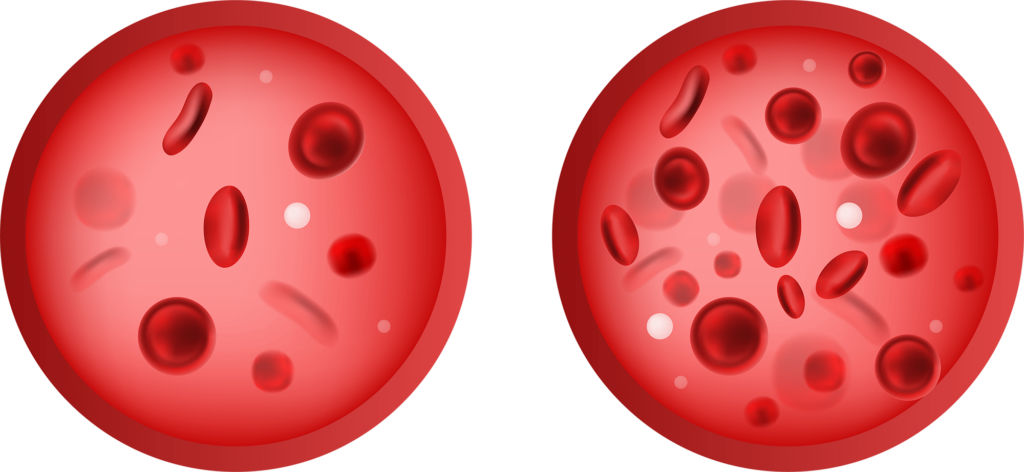
Some of the symptoms that come as a result of anemia are things like feeling tired or weak, having that lethargic feeling, weakness, pale or yellowish skin, dizziness, chest pain, cold hands, cold feet.
Why?
Because Oxygen is that important. We use it in the process of cellular respiration – and the result of that is the production of ATP, which is the energy currency of the body. So anemia is not our friend. It sucks.
3 Major Causes of Anemia
There are three major causes of anemia, and when we look at the causes, it just makes logical sense.
#1: Loss of blood
First, there’s loss of blood. If something causes you to lose blood, you’re essentially losing red blood cells. This can happen rapidly or it can be chronic, where it happens more slowly over time.
Rapid Blood Loss
Some examples of situations where you can have rapid blood loss are things like when we have some major injury or during surgery, when there’s a ruptured blood vessel and even in some cases – there can be complications during childbirth.
The key thing here is there’s some sudden thing that happens where there is a quick loss of blood.
Chronic Blood Loss
When it comes to chronic blood loss, we’re talking about blood loss that can happen over time due to things like cancer or ulcers where there’s more and more damage causing bleeding, or even heavy menstrual bleeding.
It’s not really a super quick thing where all of a sudden, a ton of blood is gone, but as you lose more blood, you start feeling the effects.
Those are all examples of the first cause of anemia – loss of blood.
#2: Decreased or faulty RBC production
Let’s look at the second cause of anemia – decreased or faulty red blood cell production. We looked at the process of hemopoiesis in one of the earlier videos and saw how the production of blood is a pretty complex process.
There are many steps involved and if something goes wrong in one of the steps or if you don’t have everything you need in order to produce red blood cells, well, that can lead to anemia.
Let’s look at a few examples of this.
Sickle Cell Anemia
The first is sickle cell anemia. This is a genetic disorder that results in an abnormally-shaped hemoglobin molecule. This abnormally shaped hemoglobin is called hemoglobin S.
Unfortunately, in this form, it will deliver less oxygen to the tissues. Not only that, when oxygen levels get low, the shape of the red blood cell changes to a sickle shape, like a crescent shape.
This can cause problems because as those sickle-shaped red blood cells move through these tiny capillaries, they can actually get stuck in there and block the flow of blood.
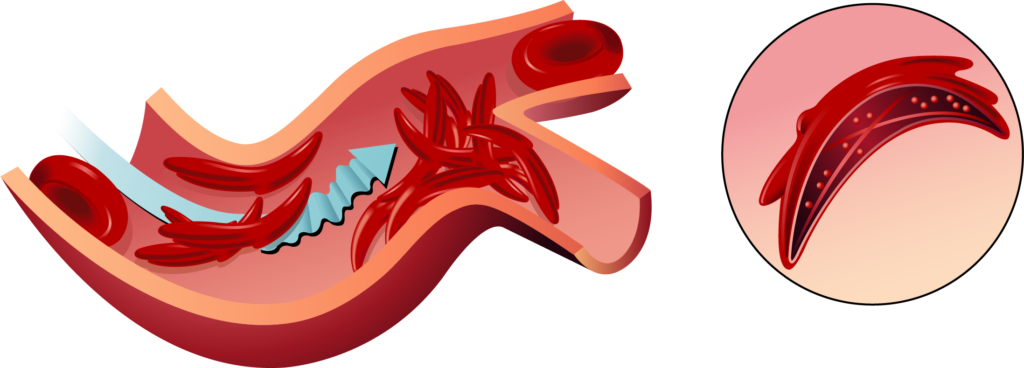
In the last video, we spoke about how the membrane of red blood cells is very flexible causing them to be able to fold over on themselves and squeeze through really tight spots.
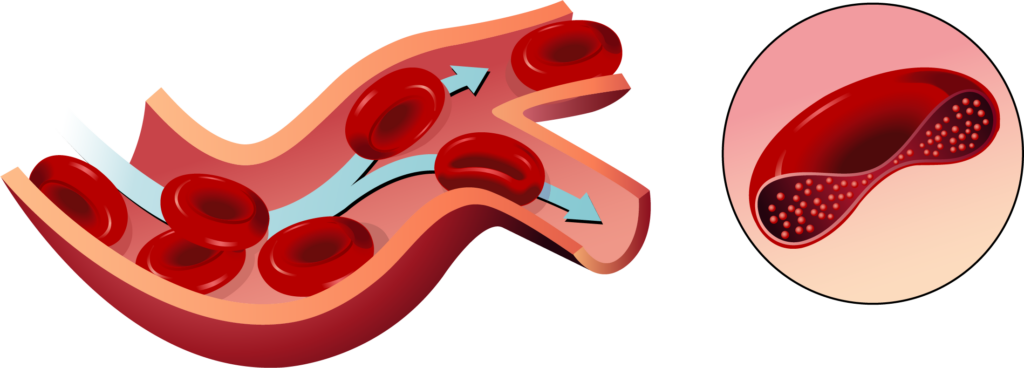
Well, that’s not the case when they have this sickle shape. And that’s a bad thing. As they get stuck in the capillaries and block the free flow of blood, that can cause things like painful joints, blindness, and even strokes.
Iron-Deficiency Anemia
Another example is iron-deficiency anemia.
In the last video, we spoke about the heme molecule and how an important component is iron. If there isn’t enough iron, that will result in decreased production of heme, which will affect the functionality of hemoglobin.
Bad hemoglobin, bad oxygen delivery – bad problem.
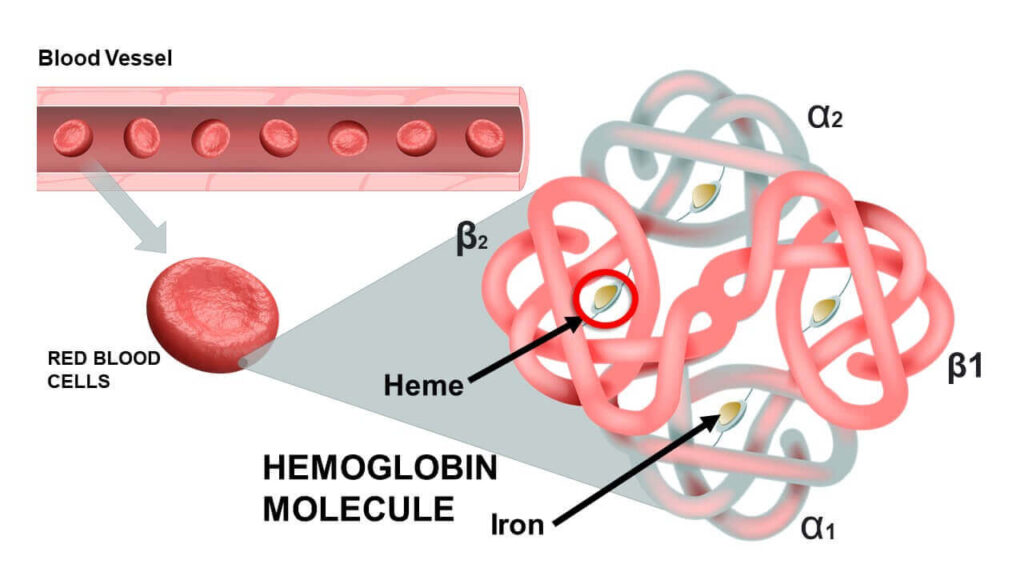
Some of the causes of iron deficiency anemia are: not getting enough iron in your diet, which is a problem that’s common with vegans and vegetarians. That doesn’t mean you shouldn’t be vegan or vegetarian. My wife is third generation vegetarian. So if my wife can do it, you can do it too. 😀
But seriously, it just means that if you ARE a vegetarian, you definitely want to make sure that you are eating foods that are rich in iron. Things like legumes, leafy greens, certain nuts… you have options.
Other causes would be when there’s some kind of intestinal disorder like celiac disease that results in an inability to absorb iron. So it’s not that you aren’t getting enough in your diet. It’s that even though you’re getting enough, your body isn’t absorbing it.
Other cases could be like sometimes in pregnancy, iron levels can be an issue because you have a developing fetus inside of you that also needs iron. Your OBGYN may recommend iron supplements to make sure that you’re getting what you need depending on what your levels are at.
Vitamin Deficiency Anemia
Our final example of anemia that results in faulty Red Blood Cell production is vitamin deficiency anemia. This is usually related to a vitamin B12 or a folate deficiency.
Folate is vitamin B9. Once again, this can happen because you’re not getting enough in your diet or because of an inability to absorb what you’re getting in your diet.
In megaloblastic anemia, usually, you’re deficient in B12 and or folic acid because you’re not getting enough in your diet. And these are essential nutrients.
Pernicious Anemia
Pernicious anemia on the other hand, is the result of poor absorption of vitamin B12. Now the way this works is like this: In order to absorb vitamin B12, you need to have an intrinsic factor. This is a protein that’s present in specific cells of your small intestines.
The B12 needs to bind to intrinsic factor in order to be absorbed. WIth Pernicious anemia, there’s no intrinsic factor. Because of that, B12 absorption won’t happen the way that it should. And without enough vitamin B12, the Red Blood cells don’t mature the way they are supposed to. As a result, you get the issues we spoke about earlier that are associated with anemia.
#3: Excessive Destruction of Red Blood Cells
The last major cause of anemia is excessive destruction of Red Blood Cells. Obviously, if you are destroying significantly more red blood cells than are being produced, that leads to anemia. This kind of anemia is called hemolytic anemia.

There are all kinds of factors that can lead to hemolytic anemia. Everything from being infected by certain types of bacteria all the way to an autoimmune disease where your immune system is literally attacking your blood cells.
Conclusion
Whether the cause of anemia is due to loss of blood, decreased or faulty red blood cell production, excessive destruction of red blood cells or one of the other reasons I didn’t mention so this video doesn’t end up being hourlong, they all illustrate the importance of Red Blood Cells for our bodies to function the way they’re supposed to.
Now in the next video, we’re going to switch gears from the Red Blood cells– the erythrocytes and start talking about the White Blood Cells– the Leukocytes. I’ll see you over there.
Infographic
